Playful Paths: The Art & Utility of Incorporating Paths on Playgrounds
Paths are a must-have for many playgrounds, yet their diverse functions are sometimes overlooked. At surface level, they may appear to be — quite simply — very straightforward. But in many ways, paths are a piece of a larger picture. Not only can they serve as physical guides throughout a playground, they integrate play spaces with a surrounding community.
Paths as Guides
A common use for playground paths is incorporating them around playground equipment. Not only can paths or walkways provide an entry point to a play space, they can connect one play structure to the next. They help children understand how to navigate an unfamiliar space. Incorporating the design of a path into the playground’s safety surfacing is a creative way to keep paths fun and playful. If a playground is themed, the path can complement the theme. Imagine a car-inspired playground with a winding road, constructed using poured-in-place rubber surfacing, encouraging children to follow it as they travel across the playground. Or, a nature playground with a winding trail, constructed from engineered wood fiber, inviting children to explore nearby playground equipment.
Walkways map out a recommended path for children as they move through the playground. They can lead children through a planned sequence of equipment that allows them to experience the space in progressive stages. Designers might have a path start at lower-level play structures that foster independent play. Then, the path moves to equipment that facilitates imaginative and interactive play with others. Towards the end of the path, children arrive at equipment like climbers and towers that encourage risk taking and adventure. As such, paths not only provide a physical walkway, but a guide to an incremental playground experience, allowing children to get comfortable in one area before choosing to advance to the next.
Paths as Connectors
The function of paths does not end at the playground equipment. These walkways can serve as directional guides to on-site amenities like picnic tables, shaded shelters and bathroom facilities. They encourage families to spend more time together by directing them to nearby resources. By following paths, families can find a space to enjoy a picnic lunch or cool off under a pavilion. Paths can serve as entry points to nearby grassy areas where children can enjoy free play with sports equipment or release extra energy by running in an open space. The benefit of these walkways is their ability to be interconnected, inviting families to journey in and out of the entire space while never isolating them.
The expansive nature of pathways lends them to be community connectors. Playground paths can be designed to connect to nearby greenways, commuter belt lines or housing developments. In this way, the paths reinforce the playground’s presence in a neighborhood and make the playground accessible to urban and residential areas alike. Paths that connect to nearby areas can be landscaped with lush, native vegetation or accented by benches or fitness equipment on the path. By using walkways to integrate playgrounds with neighboring areas, designers can encourage a natural flow of people into the playground.
Undoubtedly, paths are an integral part of any playground. Not only do they serve as physical guides throughout a space, they foster a sense of community by integrating play spaces with neighborhoods. To maximize their value, it is important that the function of paths be thoughtfully considered — well before the first step is taken.
Our design team knows the importance of pathways and connecting communities. Contact CR Studio Design if you are looking for creative ways to connect play and fitness spaces within a neighborhood or adding trails and pathways to a master planned community.
